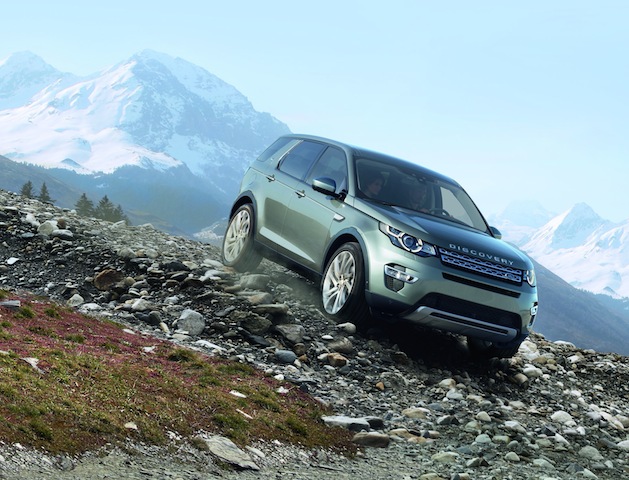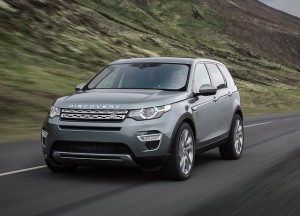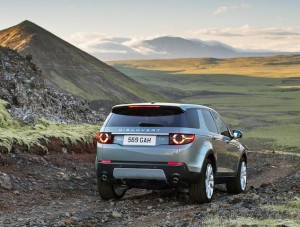
This is the new Land Rover Discovery Sport, the first model in the second phase of the British specialist’s three-tier product family: ‘luxury’ (Range Rover), ‘leisure’ (Discovery), and ‘dual purpose’ (Defender).
 The ‘luxury’ line-up is complete for now with the new Vogue and Sport, both on sale in New Zealand. The Disco Sport pictured here will launch in NZ next May with SE and HSE trim levels. It replaces Freelander and is the first of three new models in the ‘leisure’ family; the first of the new ‘dual-purpose’ Defenders will go into production in 2017-18.
The ‘luxury’ line-up is complete for now with the new Vogue and Sport, both on sale in New Zealand. The Disco Sport pictured here will launch in NZ next May with SE and HSE trim levels. It replaces Freelander and is the first of three new models in the ‘leisure’ family; the first of the new ‘dual-purpose’ Defenders will go into production in 2017-18.
Although Disco Sport is new, it is not the newest of the new, unlike the Range Rover Vogue and Sport which use an all-alluminium chassis from the Jaguar XJ. The Disco Sport sits on a heavily modified version of the older platform that supports the Freelander and Range Rover Evoque.
It uses the older engine line-up, too, arriving in NZ with the Freelander’s 110kW TD4 diesel and 140kW SD4 diesel – both with 420Nm – and a 2.0-litre 177kW/340Nm petrol unit. The diesels will be available with a choice of six-speed manual or nine-speed automatic transmissions; the petrol gets the auto only.
All three models get the choice of permanent four-wheel drive or an active driveline that switches between two-wheel-drive and all-wheel-drive to maximise efficiency. Later in the production cycle, Disco Sport will pick up the first of the Jaguar Land Rover Ingenium family of engines, probably in 2017.
 When first spied as a prototype Disco Sport was called the ‘baby’ Discovery because it was smaller than the regular Discovery and larger than the Freelander. But the production version shows Disco Sport is longer than the Freelander, but narrower and not as tall. The dimensions point to a ‘leisurely’ design direction.,
When first spied as a prototype Disco Sport was called the ‘baby’ Discovery because it was smaller than the regular Discovery and larger than the Freelander. But the production version shows Disco Sport is longer than the Freelander, but narrower and not as tall. The dimensions point to a ‘leisurely’ design direction.,
“It’s important to get the right level of differentiation between the families,” said Land Rover design director Gerry McGovern. “The Discoveries are more of a radical departure than the Range Rovers, but we’re tailoring vehicles to individual customers’ needs. Existing Discovery owners told us they wanted something more premium and less brutal, so that’s what we’re delivering.”
Land Rover is pushing Disco Sport not so much as a seven-seater but a ‘five plus two’ carrier, the rear-most seats only suitable for children. Tech plays a big part inside with an all-new infotainment system featuring an 20cm touchscreen which operates like a smartphone with swiping and ‘pinch and zoom’ functionality.
 Land Rover’s InControl apps feature everything from Internet radio to sat-nav. Between the two main analogue instrument dials is a 12cm TFT screen, which displays key information, including off-road mode. There’s on-board WiFi and an optional 17-speaker Meridian sound system.
Land Rover’s InControl apps feature everything from Internet radio to sat-nav. Between the two main analogue instrument dials is a 12cm TFT screen, which displays key information, including off-road mode. There’s on-board WiFi and an optional 17-speaker Meridian sound system.
Safety kit includes standard autonomous emergency braking that works at speeds up to 80km/h, and a pedestrian airbag that will pop out at the base of the windscreen if the car detects an impact. The also includes lane departure warning, traffic sign recognition and stability systems to aid towing.
Terrain Response will tune steering, throttle, gearbox and the four-wheel-drive system according to the conditions. Ground clearance is 212mm and wading depth is 600mm; approach and departure angles will be within traditional Land Rover parameters.

